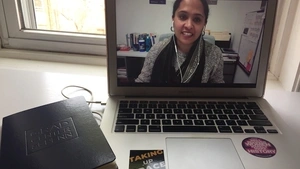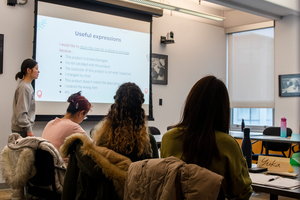Faculty Expert
-
Zachary Herrmann
Senior Director of Strategic Initiatives
Learning, Teaching, and Literacies Division
In response to the coronavirus, college instructors are shifting their in-person courses online.
Zachary Herrmann and Penn GSE’s Center for Professional Learning have some experience making this work. For the last two years, Herrmann’s Project-Based Learning certificate program has started with an in-person summer workshop, followed by online sessions throughout the year.
When teaching transitioned from in-person to online, Herrmann and his team had to modify how they plan lessons, communicate with students, and lead discussions. In doing so, they found new methods to establish meaningful and lasting connections with their class.
Herrmann offers guidelines that can apply to any online lesson taught synchronously—that is, with all students joining a single session—regardless of platform:
Be clear and explicit with norms
Some instructors never have explicit conversations about norms for their in-person classes. That’s much harder to do online. Make class norms the topic of your first meeting. Consider how you can co-create your new ways of working with your students, who might be more used to meeting in virtual settings and have important insights or ideas to share.
At the end of the conversation, everyone should be able to answer questions such as how are students expected to participate, ask questions, and respond to other students, as well as more mundane issues like when participants should mute their microphones or display their video.
Get organized
Create a single document — your virtual agenda — that provides links to all of the session’s resources, materials, and videos.
Share the agenda before the session starts and have it accessible during the meeting. This is especially helpful for students if their internet connection is interrupted during class.
Make student thinking visible
Create a “virtual whiteboard” that allows every student to respond to questions or prompts. If your discussion software allows you to create polls or surveys, use them often.
Encourage students to react and respond to each other’s ideas. They don’t all have to talk out loud to do this. Try chat functions or even a Google document with a table. Your students might already be well versed at chatting during a video call, so don’t be afraid to ask them to engage in multiple ways.
Ensure that all students participate
This might seem like the most daunting aspect of remote teaching. But virtual learning platforms actually give you more ways to encourage and monitor participation.
Have someone monitor questions coming in from the chat feature. As a class, determine how students should signal that they would like to speak. Consider asking students to type HAND in the chat box, give a visual cue in the video frame, or add their name to a speaking queue.
And monitor your students’ internet connections. Poor connections can keep people from participating as much as good connections can allow others to dominate. Be clear with students about what they should do if they get disconnected.
In addition to polls and chats, start conversations in the session that can be continued later on in discussion boards.
Pay attention to students’ emotional health
There is always an emotional component to learning, but in these challenging times instructors have to be particularly aware of their students’ needs.
Students might be in transition, trying to secure housing, dealing with sick loved ones, or be overwhelmed with stress. In a classroom, educators would be on the lookout for these emotional strains. If necessary, they would adjust workload or timelines, and provide needed supports.
Teachers can still make these crucial check-ins online, but they have to be more intentional about them. Maybe start sessions asking what issues people are facing. Maybe incorporate challenges into discussion questions. Directly ask students to tell you privately if they are running into problems. And make sure that everyone is aware of the resources offered by your school.
Maintain high expectations
You started the semester with ambitious learning goals for your students. While some of your goals may need to change, it’s still possible to create the powerful learning experiences your students deserve. Your tactics may just need to evolve.
If you have been holding discussions, don’t revert to “information dissemination” now. Keep posing thought-provoking questions. Keep asking students to grapple with real problems and dilemmas. Keep pushing for higher order thinking.
This might mean having students work in smaller groups than you did previously. If those groups are meeting outside your scheduled session, consider grouping students by time zone.
As anyone who has worked in a multinational company or collaborated with researchers across continents can tell you, real problems get solved at a distance every day. You can do this, and so can your students.

Subscribe to the Educator's Playbook
Get the latest release of the Educator's Playbook delivered straight to your inbox.
Media Inquiries
Penn GSE Communications is here to help reporters connect with the education experts they need.










